Crossroads of the Adriatic Tour
Albania, Croatia, Montenegro, Bosnia and Herzegovina, and Slovenia
May 23 - June 12, 2015
Part Five - Back to Croatia
Page Eleven - Zagreb
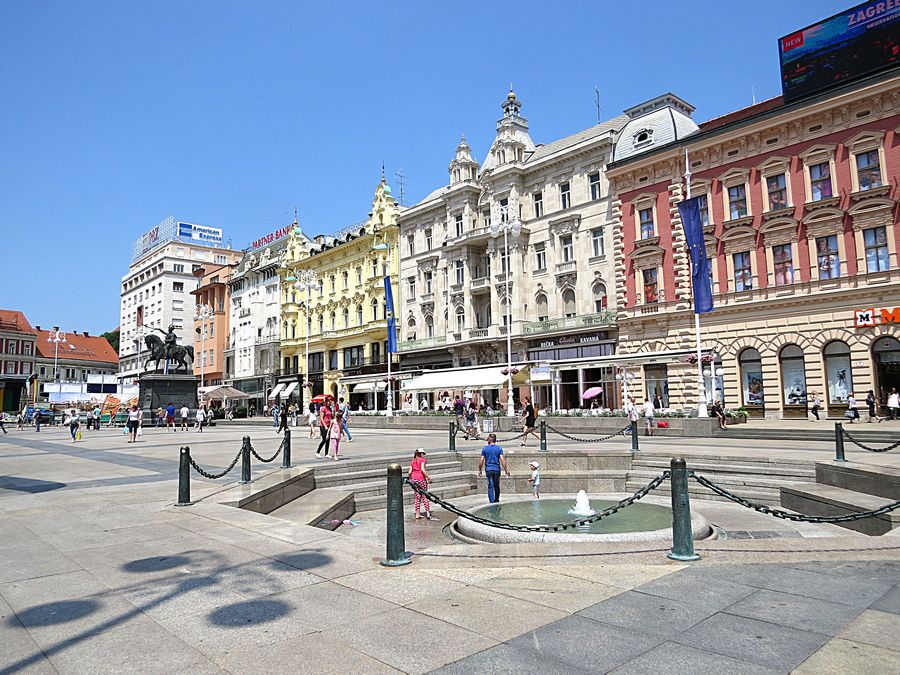
Zagreb - a city of about 800,000 people that has been Croatia's
capital off and on since 1557. Here is Jelacic Square, a main hub of activity.
It is in the Lower Town or Donji Grad. The square features an equestrian statue
of Josip Jelacic, a 19th century governor who did a lot to unite Croatia under
the Hapsburg Empire.
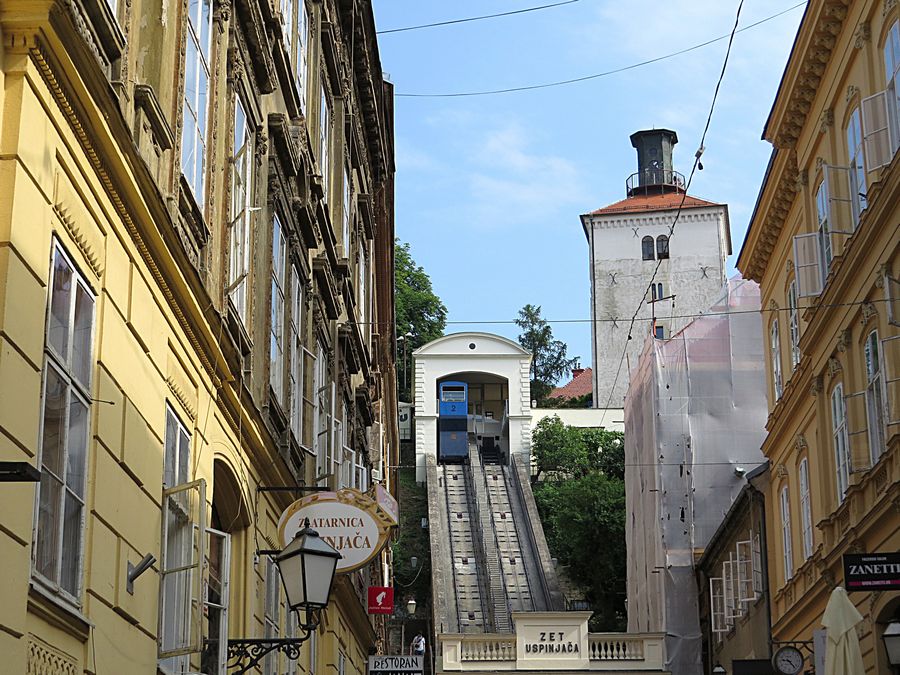
As you face the statue of Jelacic in the Square, down the street
to the left is the funicular that you can take to view medieval
monuments in the city's Gornji Grad, or Upper Town that has 2 medieval
settlements of Gradec and Kaptol. From the top of the funicular, you can
get a panorama of Zagreb.
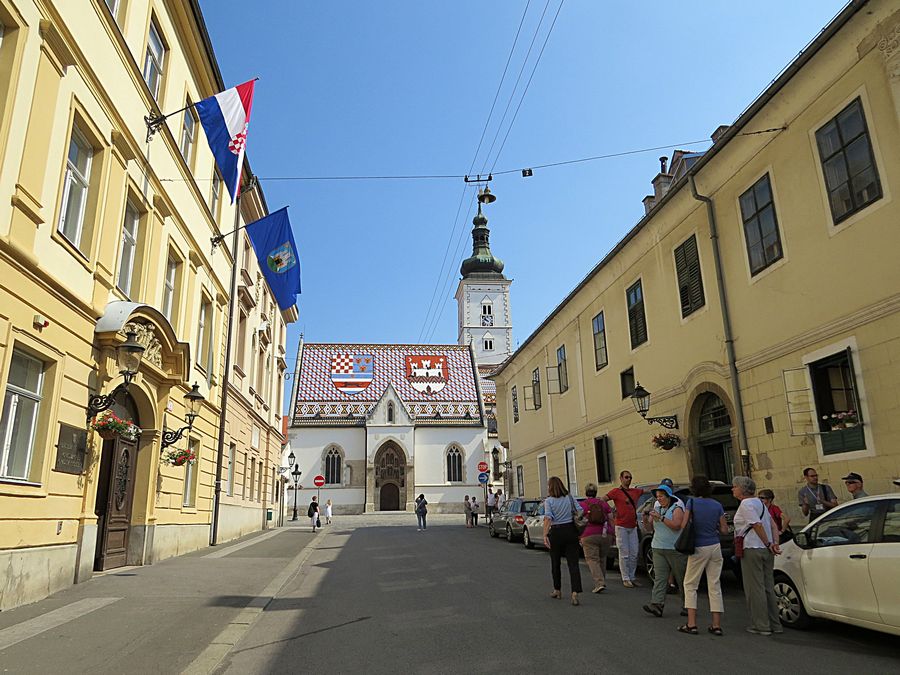
After taking the funicular, we walked to this area. On the right is the Museum of
Broken Relationships. On the left is the Croatian Museum of Naive Art.
The latter features expressionistic paintings by untrained peasant artists. This
type of art started in the 1930s here.
The Museum of Broken Relationships was
started in 2010 by a couple that had broken up. Its mission is to collect true
stories of failed couples from around the world, present their story in their own
words, and display an actual item that embodies their relationship. I went to both
museums during free time. The Museum of Broken Relationships contained
several stories of broken relationships in Colorado.

St. Mark's Square with Church of St. Mark in the center. The original
church was from the 13th century. The colorful tile roof is from 1880 and
depicts 2 coats of arms. On the left, 3 lions' heads stand for the Dalmatian
Coast, the red and white checkerboard symbolizes north-central Croatia, and
the rest represents Slavonia. On the right is the seal of Zagreb, which features
a walled city. St. Mark's Church is closed except for services.
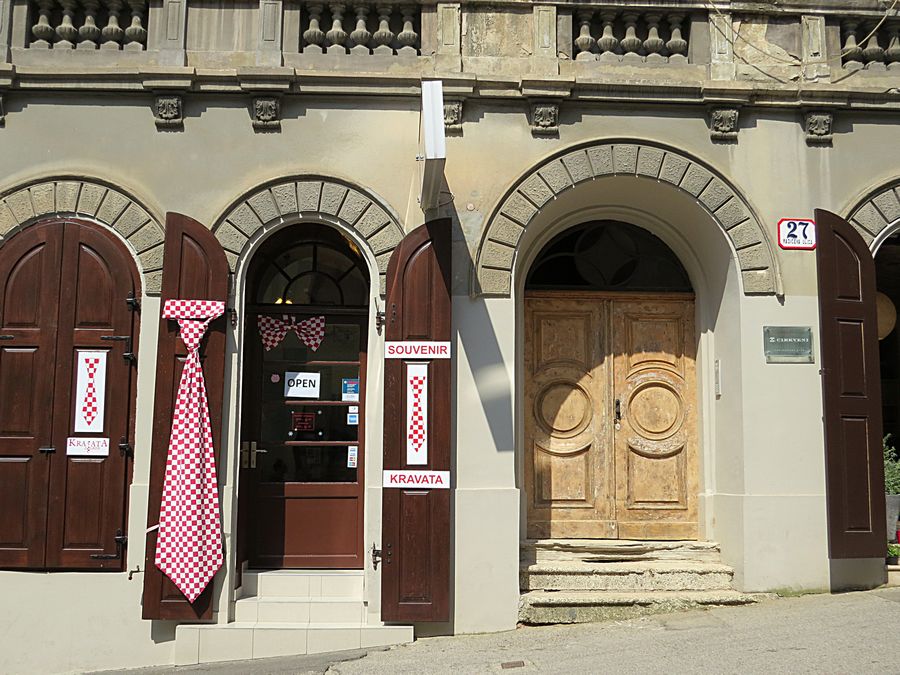
Why would I take a photo of a necktie souvenir shop?
Croatia invented it. The cravat is a neckband and forerunner
of the modern necktie and bow tie and originated from
a 17th century military unit known as the Croats.

An area of restaurants and shops in Upper Town.
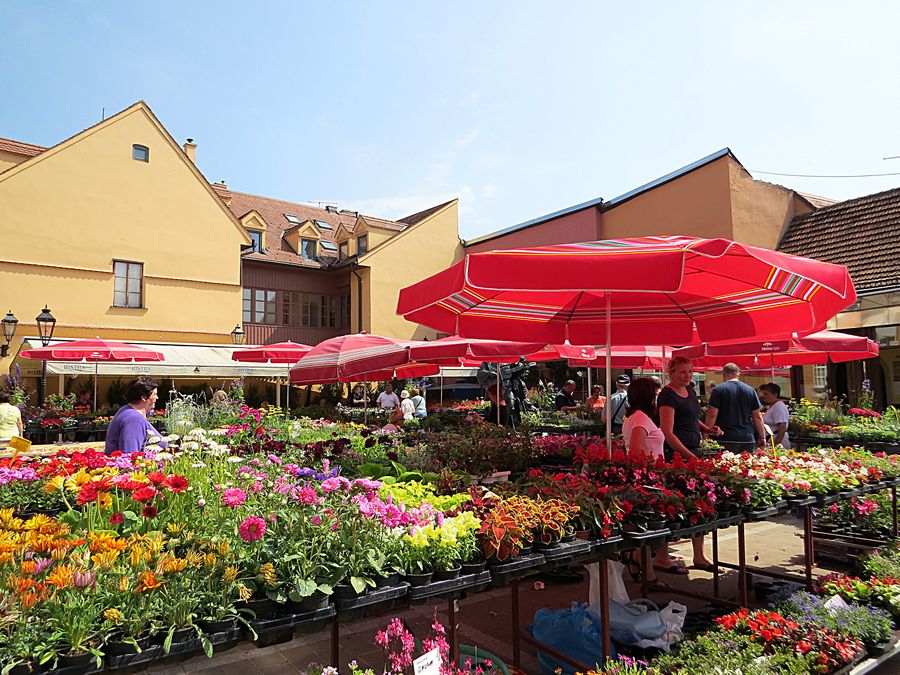
In the Kaptol area of Zagreb is a local market (Dolac), selling flowers and all kinds
of food items. The Dolac market is behind Jelacic Square.

The Cathedral of the Assumption of the Blessed Virgin Mary and the
Saintly Kings Stephen and Ladislav, understandably just called "The
Cathedral" by locals. Inside there are monuments to many deceased,
famous Croatians.
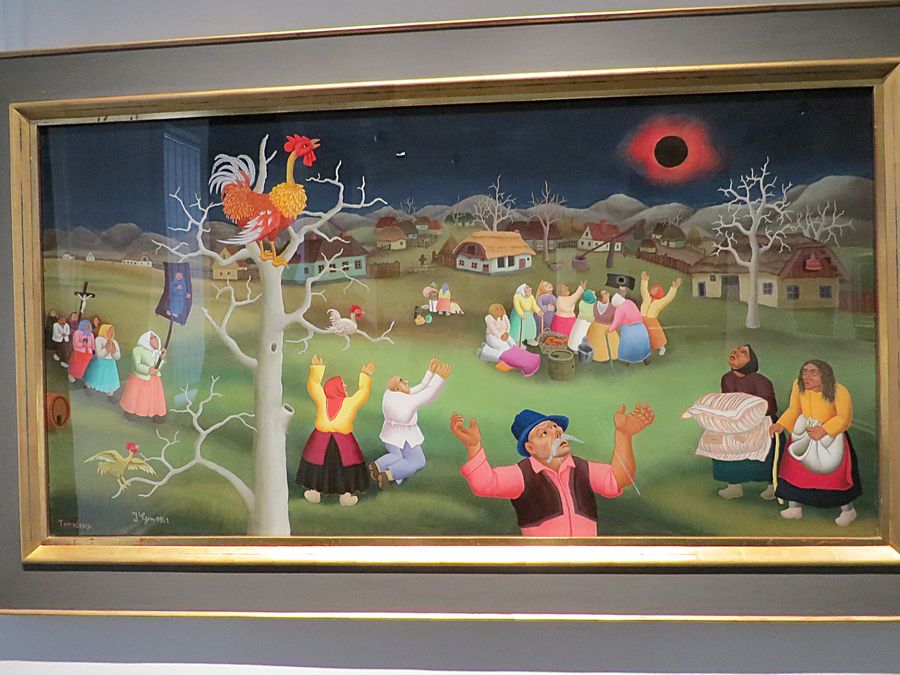
This photo and the 2 that follow shows Croatian Naive Art seen at the
Croatian Museum of Naive Art. It is actually called Naive Art, not
Native Art.

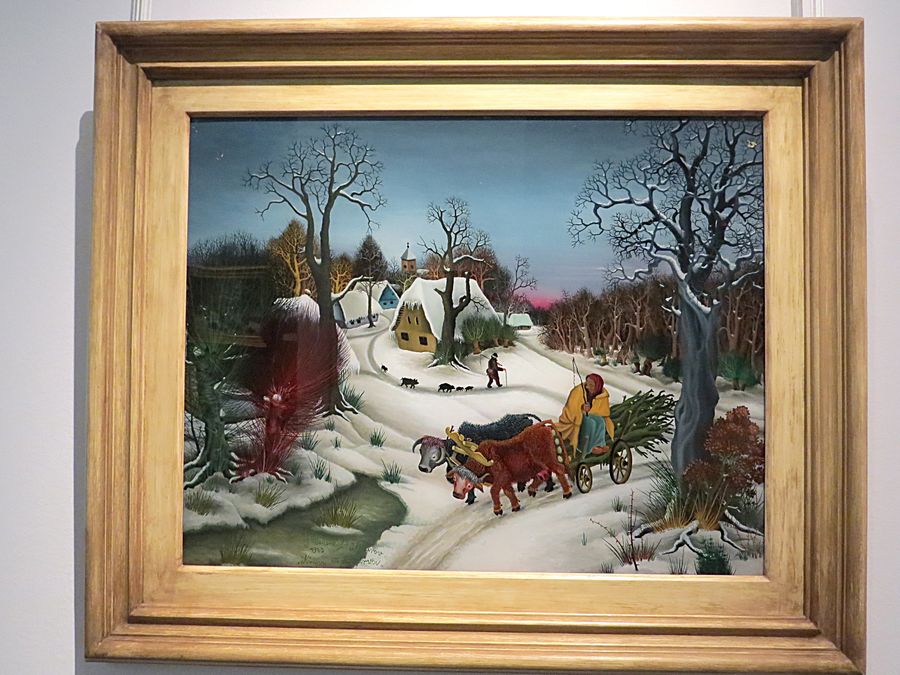

A newly married couple walking on the street in Upper Town
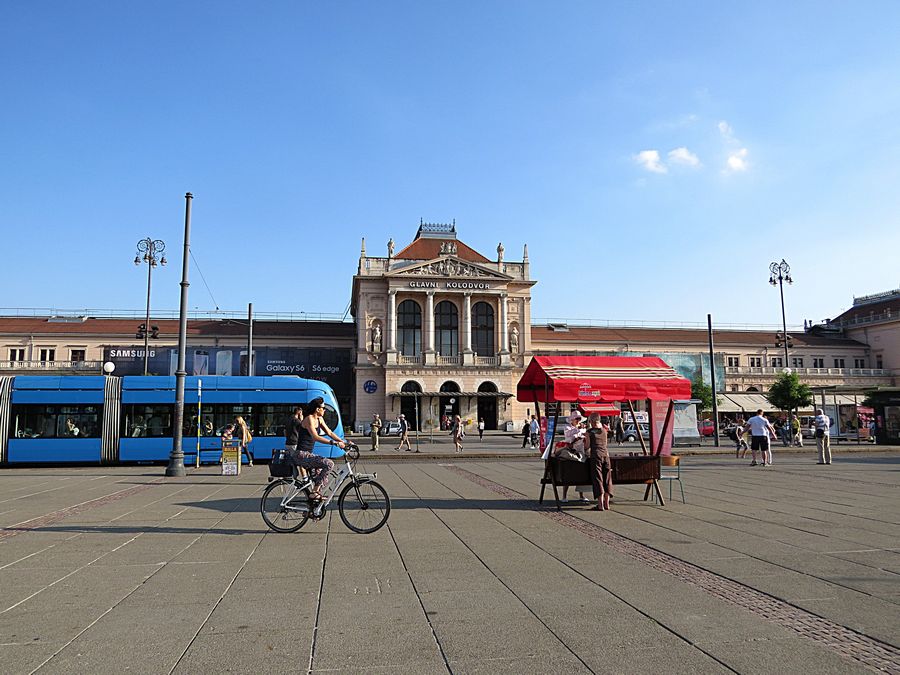
Train station in Zagreb
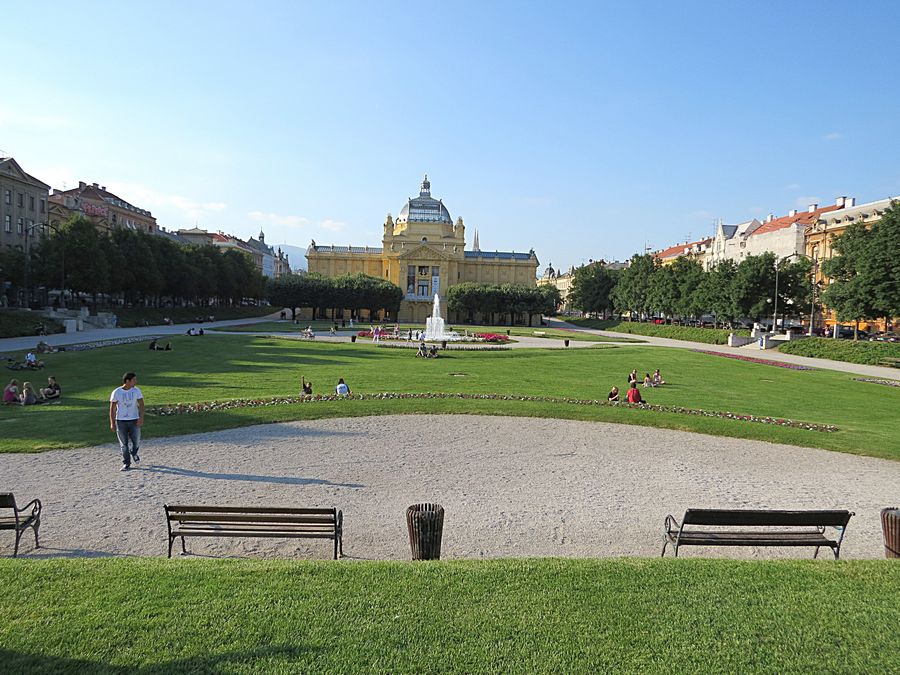
Park and art museum across the street from the train station

Croatian National Theater in Zagreb
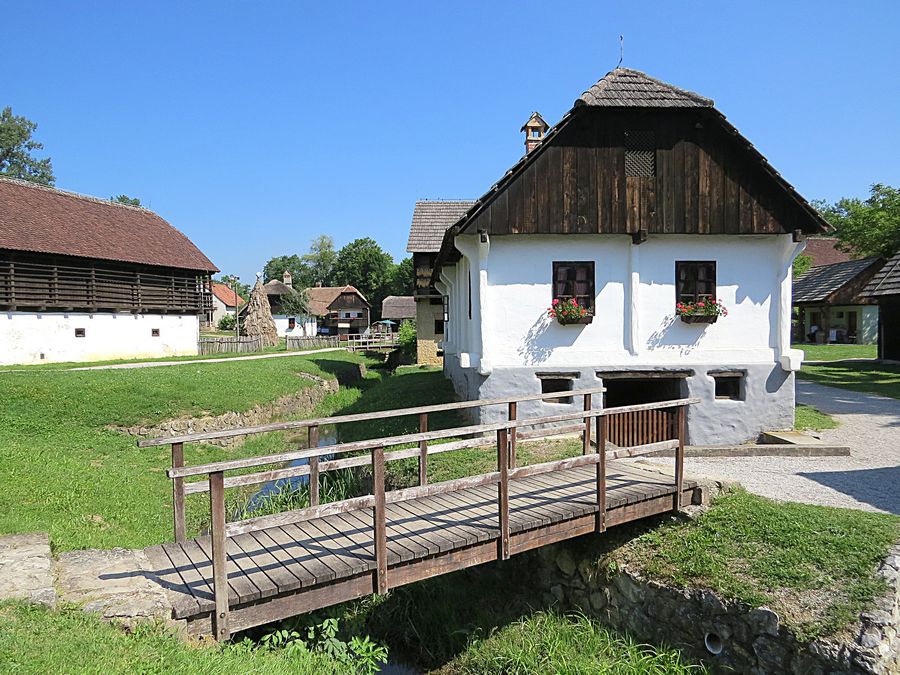
We travelled north of Zagreb to the Zagorje region, including the old
town of Kumrovec.
The old part of Kumrovec comprises the Ethnological
Museum Staro Selo
(Old Village)
with village houses displaying permanent
exhibitions of artifacts related
to the life and work of Zagorje peasants
in the 19th/20th century.

Kumrovec is the birthplace of marshal Josip Broz Tito (1892–1980), the
president/dictator
of Yugoslavia.
The birth house of Tito (built in 1860
as the first brickwork house
in the village) features the Memorial Museum of Tito.
Tito's birthplace is part
of the open air museum.
Decades after his death,
he is still loved by many
of his former Yugoslavian subjects, as many believe
his tight rule kept the country united and the diverse ethnic groups together.
Our Croatian guide said he has mixed feelings about Tito. When Tito
was in power, you could count on the government giving you a job after
your education, and you had personal security. Now people remain
nervous about the political stability. However, he was a dictator
that dealt brutally with his political enemies.

Statue of Tito near his childhood home.
When the Nazis occupied Yugoslavia, Tito organized a communist/
partisan army to successfully fight them. As a war hero, he became
President for Life after the war. His communism was not Soviet style,
as he broke away from Stalin in 1948 and did not ally with the Soviets.
He played the East and West against each other to gain aid from both.
After his death, the fragile union within Yugoslavia started to
unravel, eventually leading to declarations of independence and
the violence of the 1990s.
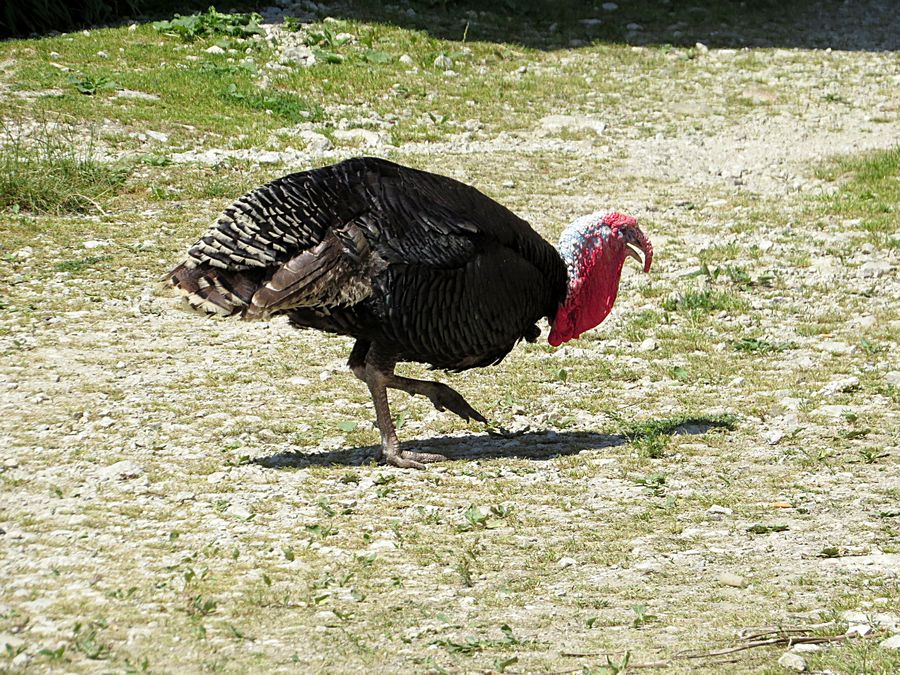
One of several turkeys wandering around this site
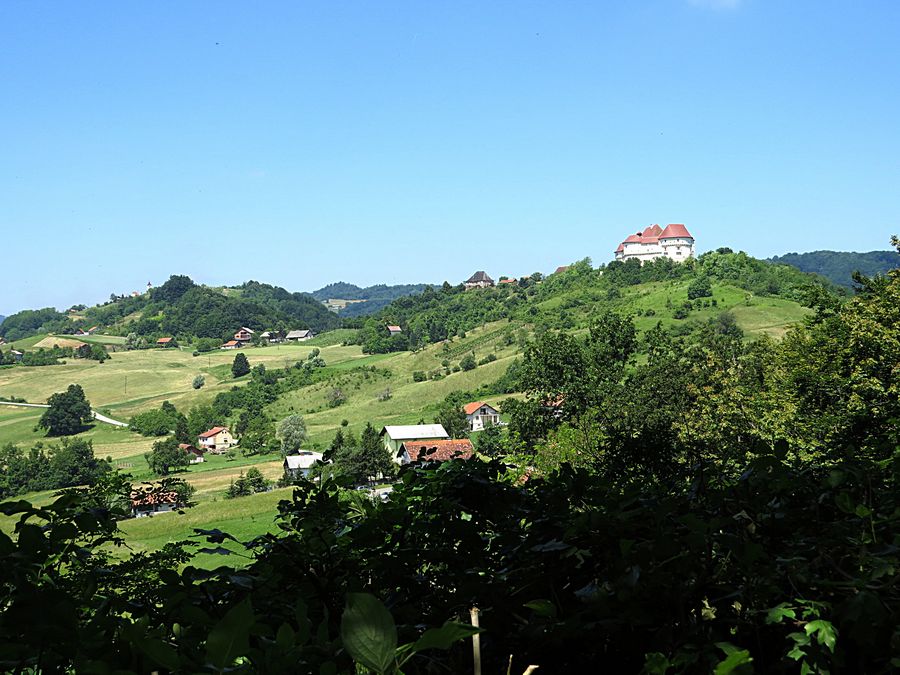
Countryside view near Zumrovec with a castle on the right

The town of Samobor located near Zagreb
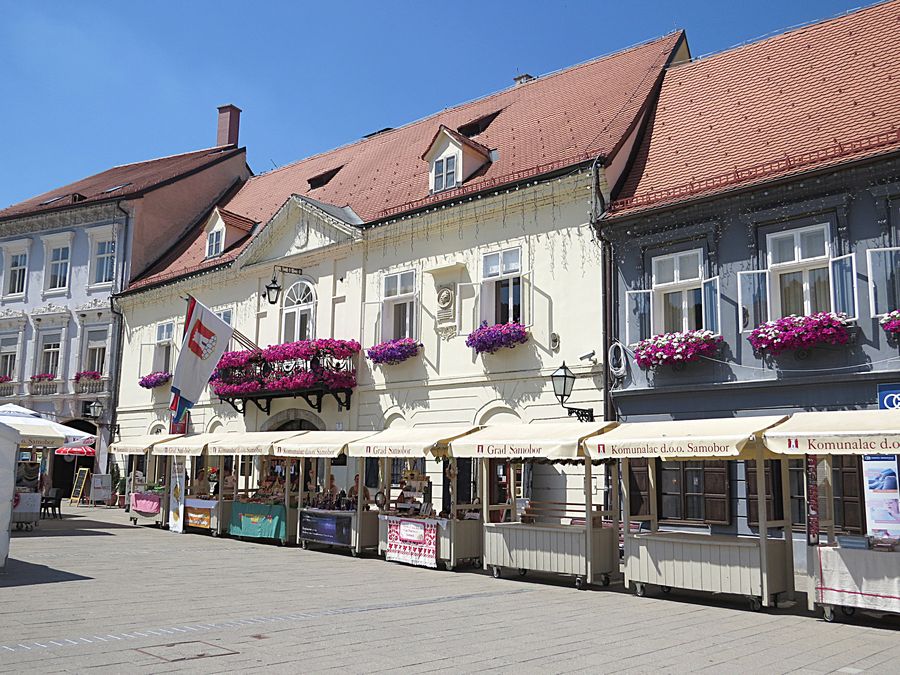
Samobor is almost 800 years old. Now it is full of craft shops and tourists.

Ruins of Samobor Castle, high above the town,
initially built in 1264 and provided a defense post.

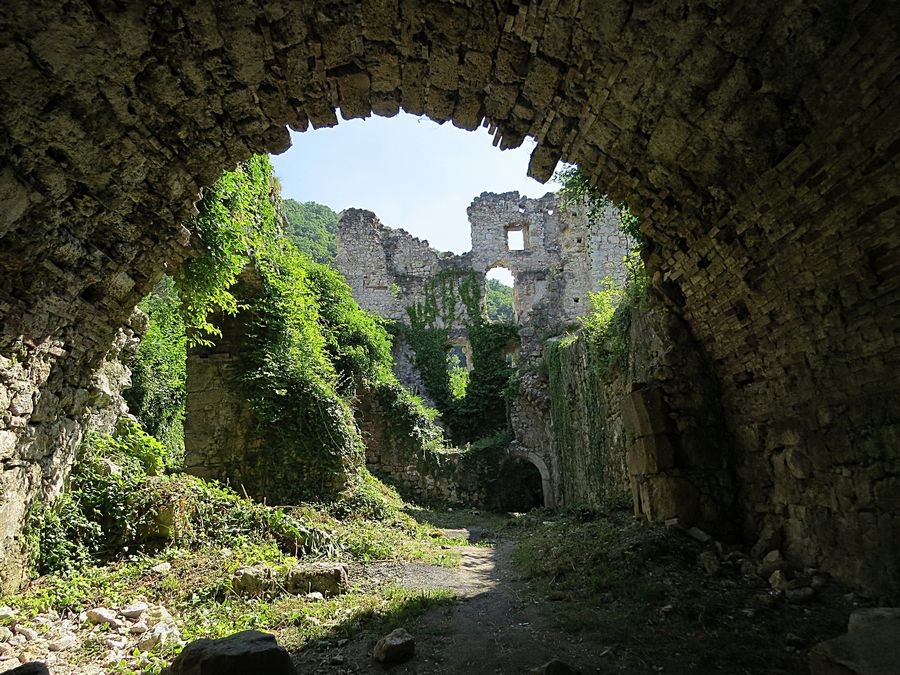
Link to Part Five, Page Twelve - Plitvice and Opatija
Pat's Home Page